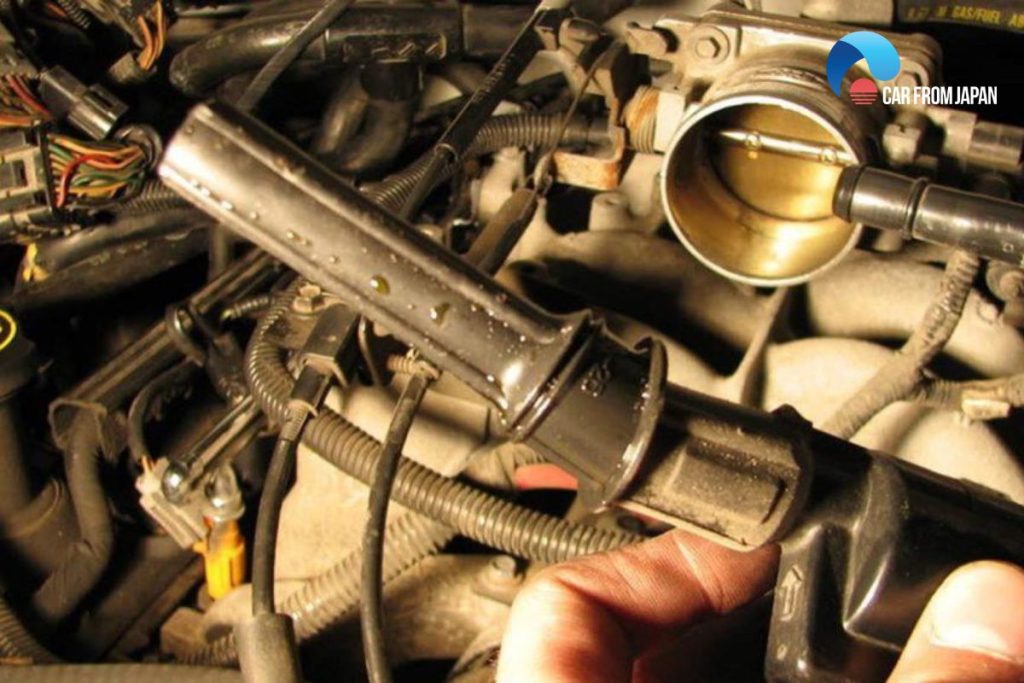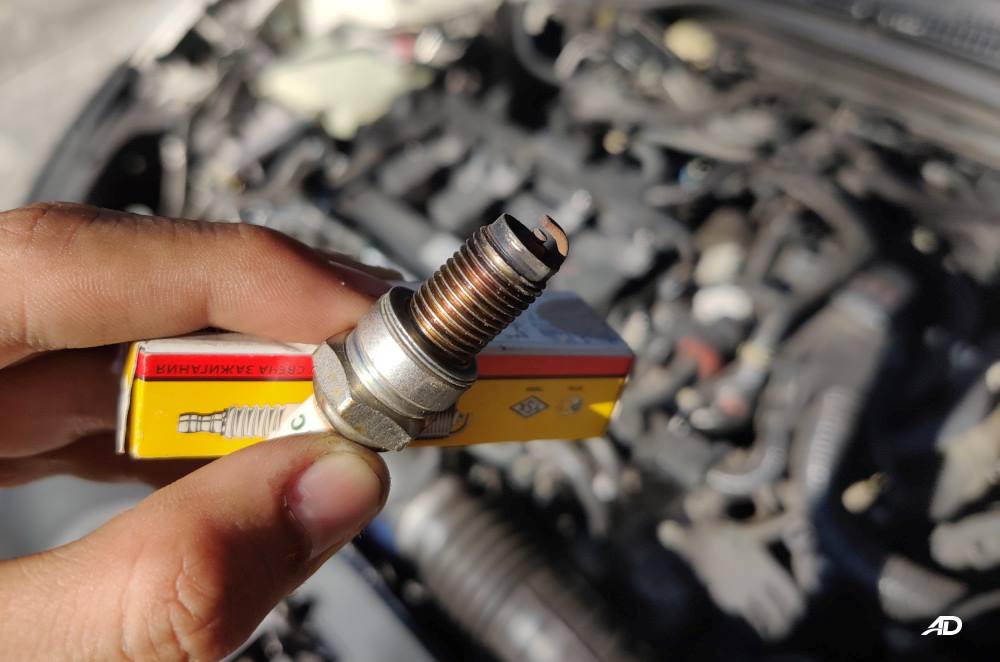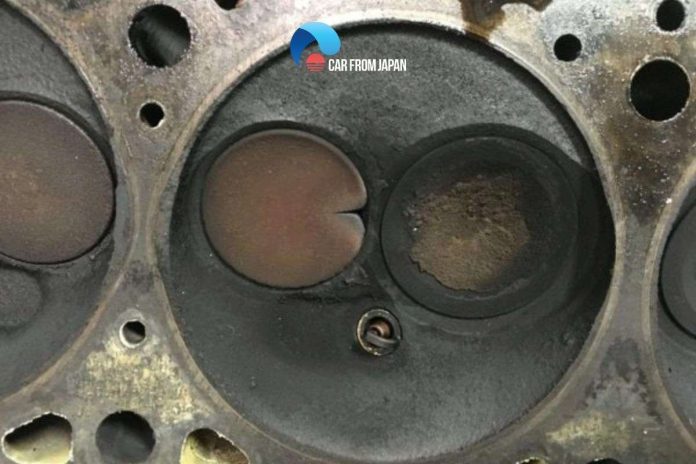Exhaust valves when not sealed appropriately allow the combustion gasses to run off in the valve seat and valve. So, when these combustion gasses continuously enter the valve, it leads to the burnt exhaust valve symptoms.
Burnt exhaust valves are one of the most common car tribulations that car owners may face once in a while.
The valves have to undergo colossal pressure and need continuous opening and closing up to twenty-five hundred times per minute.
But one can save the exhaust valve from burning. Well, it starts showing certain symptoms before destroying it completely.
So, let’s explore what those symptoms are to secure the valves before it is burnt completely!
Burnt Exhaust Valve Symptoms: Explained
Almost anyone with the car will have to face this once in a while. So, what causes burnt valves?
Here are those symptoms to know that can save you from having those exhaust valves burnt.
Burnt Exhaust Valve Symptoms: What To Take Notice?
Poor Engine Performance
A burnt exhaust valve can also reduce the performance and power of the engine. Burnt valves can tend to have huge holes that will leak out all the glasses.
This eventually reduces the compression, resulting in the poor performance of the engine. The main reason why one can face this issue is not sealing the valves correctly.
Also, if you are not fixing other compression problems, the chances of burning the exhaust valve are obvious.
This will eventually lead to poor power & performance of the engine besides a burned exhaust valve.

See More: White Smoke From Exhaust: Causes and Solutions
Complexity In Starting The Car
Cars are just like humans. Remember, how low we feel when we are sick. It’s because something inside us is not working fine. The same goes for the cars.
When the entire exhaust valve is burnt, how can a car even start normally? It will, eventually, but then it will certainly show some symptoms to let you know about the issues going on inside.
A burnt valve does not allow the car to gas up, as it should. And, that’s the reason why it doesn’t start immediately when turned on.
So, if you are having trouble starting the car, maybe you should check for the burnt exhaust valve.
Misfiring
Following up, misfiring is among the most common burnt exhaust valve symptoms you should keep close eyes on.
When the cylinder in the engine fails to discharge an appropriate amount of fire, it is termed as Misfiring.
For the proper working of a cylinder, these things need to work appropriately, which are good compression, the right spark at the right time, and a proper mixture of air and fuel.
But when the exhaust valve is burnt, you can expect proper compression, which is needed to avoid misfires.
So, if the cylinders in the engine are misfiring, it is a clear sign of the exhaust valves being burnt.
Experts always suggest getting familiar with the symptoms to ensure that you detect the issues in the car before it turns into a bigger and unmanageable one.

Blue or White Smoke From Exhaust
Blue or white smoke from exhaust is one of the most obvious signs of inadequate valve seals. When you start your automobile in the morning, pay attention to the odors coming from the tailpipe.
When the engine initially begins, the combustion chamber will absorb any leftover oil if the valve seals are not functioning properly.
If this occurs, a sizable plume of blue-white smoke will emerge from your exhaust immediately after the engine has started.
Reduced Fuel Efficiency
Oil entering the engine inappropriately is one of the purposes of valve seals. Your automobile will use more oil than necessary if the valve stem seals are burned or damaged since they can’t do their job properly.
If your car uses too much oil, a dipstick can help you find out. If your levels decrease more quickly than normal, your valve seals could be failing.
One of the most dangerous signs of a faulty engine valve seal is excessive oil consumption since it might result in further harm.
The plaintiff in Kucher v. DaimlerChrysler Corporation had to have his car’s engine replaced as a result of damage brought on by excessive oil consumption.

Noise from the valves
When you accelerate, you could also hear a noise that sounds like air escaping from the valve. Air escapes beyond the burned valve as a result of pressure rise in the combustion chamber brought on by the burned valve.
These are a few of the most typical indications that a valve has burned. It is advised that you take your car to a qualified technician as soon as you detect any of these symptoms so they can identify the problem and fix it before additional harm to your engine is done.
It’s crucial to not dismiss any of these symptoms since they may point to major engine problems that, if ignored for too long, might result in expensive repairs or even full engine failure.
Burned Exhaust Valve Causes and Quick Solutions
These are some of the most easy-to-notice symptoms of a burnt valve. They may be results of 3 broken parts below.
Failed Spark Plug gap
It’s crucial to confirm that the spark plug gap is adjusted appropriately for your engine type during routine maintenance inspections.
If it is excessively broad, more oxygen will enter the cylinder, increasing the chance of pre-ignition, which causes the piston to rise more quickly than it should and causes the combustion chamber to overheat.

Mixture of fuel and air
This happens when too much or too little gasoline or oxygen enters the engine, resulting in a high-temperature environment in which parts might be destroyed.
When this occurs, it is critical to verify your vehicle’s engine management system for any defects as well as the air filter and other components.
Broken exhaust valves
These degrade with time from repeated usage and may become jammed open, letting more heat than necessary into the cylinder.
If this happens, it’s crucial to change the exhaust valves before moving on to repairs on other engine components.
Incorrect cam timing
This occurs when the camshaft and crankshaft do not line up properly, resulting in higher friction between the components and a rise in temperature, which can damage valves.
To solve this issue, examine the timing belt or chain and ensure that it is properly adjusted.
Understanding what causes a burned valve and adopting preventative measures will help assure your vehicle’s reliable functioning for years to come.
FAQs on Burnt Exhaust Valve Symptoms
Can you drive with a smoldering valve?
Unfortunately, driving with faulty valves might do much greater damage. The misfire will harm the catalytic converter, which is an important emission device.
Do burned valves have an odor?
Both valve covers can leak enough oil toward the gearbox at the corners to flow down the engine block and end up on the hot exhaust center pipe beneath the oil pan.
Both of these pipes will physically burn the oil, producing the scent as well as smoke or what appears to be steam.
Can faulty valves result in low oil pressure?
Low pressure can also be caused by leaks in the vehicle’s oil tubes.
Internal oil leaks can occur due to a variety of issues, such as worn piston rings and valve seals or PCV valve failure.
How frequently should you perform a burnt valve repair?
We propose the following schedule in general: Every 12 months, testing is performed. Repairs should be performed every three to five years.
How do you repair a burned-out exhaust valve?
A burned-out valve cannot be repaired; it must be replaced. In some cases, you should also change the cylinder head!
Check out this video from Killa Watt Garage to learn more about some symptoms of bad exhaust valve!
Conclusion
Overall, the burnt exhaust valve symptoms are common and quite easy to notice.
Getting familiar with these symptoms will surely help you in understanding that the valve has burnt. Make sure you know these signs to perform a suitable fix as soon as possible.
For more insightful Car maintenance tips, follow Car From Japan today!



